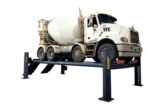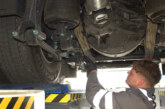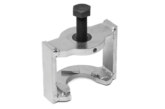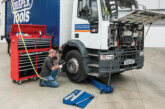
With correct turbocharger installation crucial to maximising efficiency and managing emissions, Jan Zieleskiewicz, marketing manager at Nissens, offers a best practice guide to getting it right.
First, remember that most replacement turbo breakdowns are due to improper installation or ineffective troubleshooting. Before fitting a new turbo, always find out why the original unit failed because if the underlying cause is not identified and put right, the replacement will also fail and as a result will not be covered by any warranty claim. So, ask these types of questions: does the intercooler leak? Is the particulate filter clogged? Are any of the hoses cracked? Does the EGR valve close properly? What is the state/condition of the engine oil, is there the appropriate oil pressure generated? etc. etc.
Second, and another key factor is to check whether the vehicle manufacturer (VM) has issued a service bulletin for changing the turbocharger because certain applications require the replacement of specific parts or implementation of special procedures when the turbo is replaced. Ensure the new turbo, as with a Nissens unit, is of high quality and includes a gasket set. In addition, ensure any other necessary installation parts, such as the oil and air filter, oil, hose clamps and pipes, etc are in hand before starting.
Cleaning and examination
Clean the area around the turbo before starting the disassembly and then carefully examine all the parts such as the intercooler, inlet/exhaust manifold, pipes, hoses, ventilation, air filter box, EGR, DPF, CAT, etc., that are in and around it for any faults, damage, leaks and impurities, and place all the screws and bolts into a dedicated box.
Clean these parts as they are removed and if necessary, replace them, but take note that if the previous turbo breakdown was caused by seizure of the turbine/ compressor wheel or foreign objects inside the turbo, the intercooler should always be replaced. However, always replace the O-rings, gaskets and hose clamps.

Always use the proper tools for the job, so avoid using pneumatics, crowbars and hammers and never use liquid gaskets and exhaust gum when mounting the new turbo.
Prime the turbo’s shaft by injecting new engine oil into the turbo’s oil feed before mounting the oil feed pipe and rotating it ten times. Then measure the oil pressure at the turbocharger and check the oil flow before fitting the oil return.
Connecting and testing
Once the turbo is in place, start the engine and inspect the entire system while it’s at idle for a few minutes. Check that all the turbo connections are leak-proof (intake air, pressure, oil and coolant, if applicable) and inspect any suspicious sounds. Ensure that there isn’t too much back pressure in the exhaust system and naturally repair any detected issues. Connect test equipment and reset the fault before taking the vehicle out for a drive to check if it runs correctly, and with the right boost pressure.
Checklists:
Kit:
New turbocharger, gasket set, oil filter, engine oil, air filter, oil pipes, if necessary; replacements for other worn parts; nuts and bolts, clamps, O-rings and VMs’ technical bulletins for detailed instructions about the installation requirements for specific models.
Actions:
Investigate why the turbo broke down, clean surroundings around the turbo, place all removed parts into a dedicated box, inspect and clean the oil pipes, inspect and clean the pressure pipes, inspect and clean the intercooler, inspect and clean the intake/air filter box, inspect and clean the inlet manifold, inspect and clean the exhaust manifold, inspect and clean the EGR along with the pipes and hoses, inspect and clean the crankshaft ventilation, install the turbo carefully, lubricate the turbo with engine oil using a syringe.
Things to avoid:
Foam cleaners, liquid gaskets, exhaust gum, silicone, air tools, crowbars and hammers, forgetting to remove protective caps, keeping the engine idling for long periods of time, used parts; dropping, modifying, dismantling or trying to repair the turbo.



![Bosch outlines ESI[tronic] workshop software](https://cvwmagazine.co.uk/wp-content/uploads/2025/07/Bosch-ESItronic-25-165x109.jpg)





